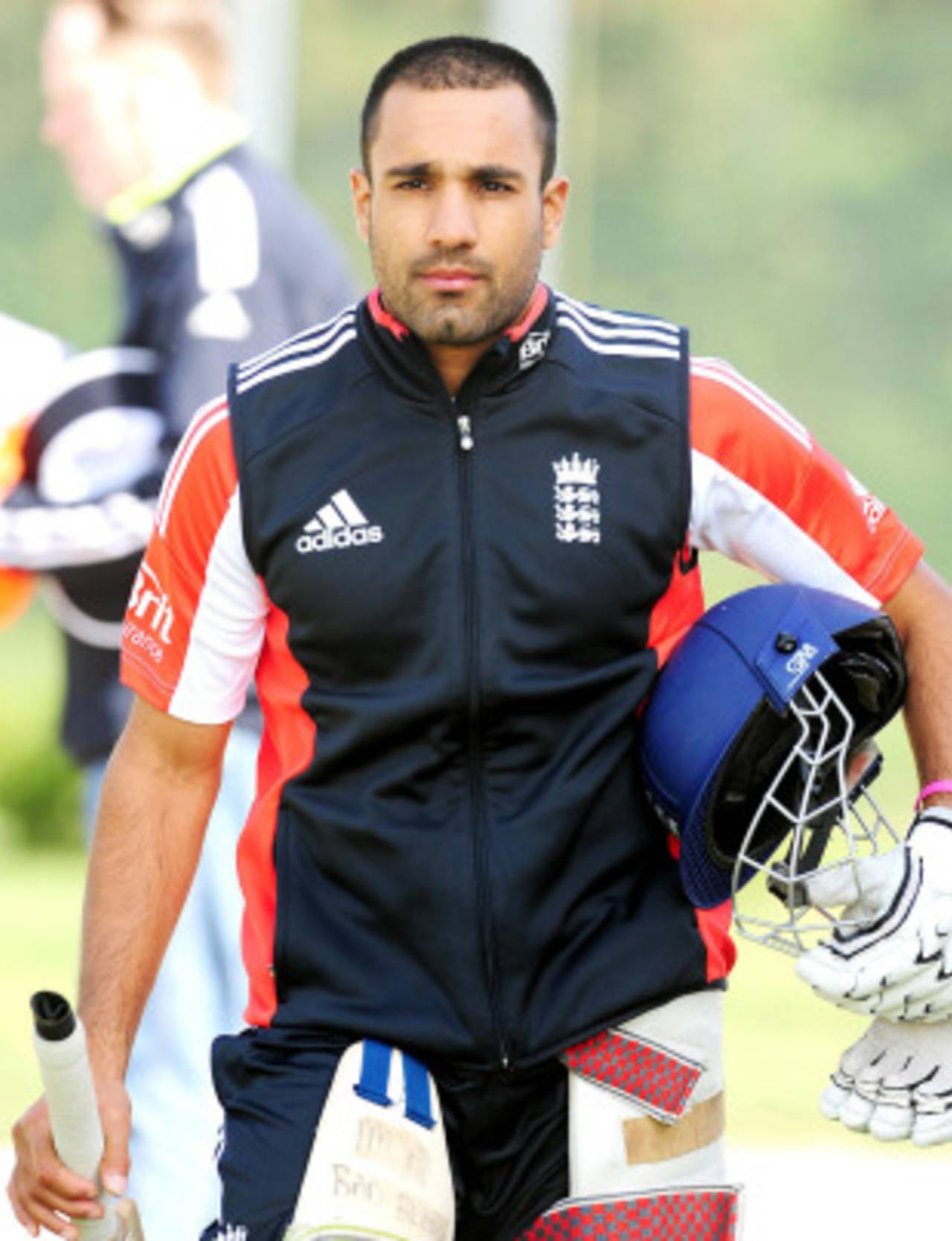Bopara the flag-bearer needs to succeed
Bar the government cabinet there are few English institutions made up from as narrow a base. Ravi Bopara needs to succeed to inspire future generations
Sahil Dutta
20-Aug-2011

Ravi Bopara may be a reluctant role-model, but for the good of English cricket, he needs to cement his place • PA Photos
These are heady days to be an England fan. Not quite the mad-cap euphoria of 2005, instead just an Alastair Cook-like calm that these indeed are the best of times. Yet, despite the overwhelmingly proficient performance from a likable side, a nagging discomfort remains. Worse still, it's one only Ravi Bopara can quell.
England, you see, aren't the most representative of 'national' teams. In fact, bar the government cabinet there are few English institutions made up from as narrow a base. Bopara aside, and his contribution has been negligible, the squad that has taken England to the top is almost all exclusively white and privately-educated. Unlike the 93.5% of the school population who are not.
The few - such as Steven Finn, Chris Tremlett or James Anderson - who aren't, have mostly come through the suburbs, the shires or the strong Northern club system. It suggests that adolescence is the period where coaching can make the most significant difference and if that's the case, England's demographics are a problem.
The resources available to £4964-a-term Dulwich College, or Radley, Bedford or Brighton, each of which can claim a member of the England side, are well beyond what state schools can provide. Moreover, with many inner-city cricket grounds sold off over the last 25 years, there is limited scope for clubs to fulfil the development role either.
The isolation of inner-city England from the rest of the country was felt acutely in the recent unrest and the national cricket team is emblematic of a society that struggles to build meaningful connections to masses of its people.
Though Bopara won't like it, his place near the England team is an important symbol. Sportsmen like Bopara or Usman Khawaja - as the one non-white face in the Australia team of recent years - tend to be uncomfortable flag-bearing for anything other than themselves and their team. When Khawaja was called into the Australia squad during the Ashes, he wanted to be seen as an Australian cricketer, not a pioneering Muslim Australian cricketer.
Though unrealistic, it's understandable and all part of the myth of sport. Part of the reason why sportsmen - cricketers especially - appear so instinctively right-wing is that sport is supposed to be the one place where the utopia of meritocracy is possible.
In theory, the best players are blessed with innate ability that gets honed through years of hard work as they rise to the top of the game. There, they compete against other similarly self-reliant individuals. In theory, any prejudice that affects that process would get exposed in performance, allowing only the best - irrespective of class or colour - to succeed. In theory, to regulate against this free competition, as South Africa's positive discrimination quota used to, is a sin against the principle of competitive sport.
In practice, it is rather more nuanced. History shows many occasions of prejudice triumphing over merit. Be it Apartheid South Africa or the 'gentlemanly' rule in England, cricket has never been divorced of the society in which it is played. Though the politics is not nearly as divisive in England now, the separation of inner-city cricket shouldn't be ignored.
So back to the new world No. 1s. English cricket seems in unspeakably good health. The money from the ECB's Faustian deal with Sky allowed huge sums - £24.8million in the last year alone - to be funnelled into Team England and, from James Taylor to Chris Woakes, there is a stock of highly capable players coming through the ranks.
But beneath the national team there are issues that need confronting. County finances are in distress, with only four posting profits in 2010 and, a more lasting concern, many working-class Asian and African-Caribbean people remain too frequently out of cricket's reach.
Which is not to say the ECB is not trying. It funds a number of schemes aimed at getting urban state-school children involved. Alongside a £14million city cricket initiative with Sport England there is the well-established Chance to Shine, which reached 3354 state schools and almost 350,000 children in 2010 alone.
These programmes could yet bare fruit in a decade's time but giving kids exposure to cricket at school may not be enough. If alongside the day of coaching in a Newham comprehensive, for instance, a child could also see in the England side - the world's best side - one of their own, their own journey would seem much more possible.
Blunt as it may be to thrust the responsibility on a single player, Bopara is the only one in place to be that man. He didn't have a turf pitch to learn his cricket on, and until he was picked up by Essex, he practiced in his school's playground in Ilford. Last month, he attended the launch of a £770,000 ECB-funded scheme to reintroduce the sport to the East End's most famous playing fields, Hackney Marshes.
The problem is that after 11 Tests before this one, the first of which was four years ago, he averages just 31.80. He is yet to shake off suspicion that he's mentally fragile and replacements are queuing up. Taylor has made 401 runs at 80.20 in his last five knocks for England Lions and Ben Stokes, Jonny Bairstow and Alex Hales are all pushing as well.
Any of those could turn into outstanding England players. Yet, while no cricketer deserves their place over another because of their background, it would be especially sad if Bopara ends absent from England's long list of summer successes.
Sahil Dutta is an assistant editor at ESPNcricinfo